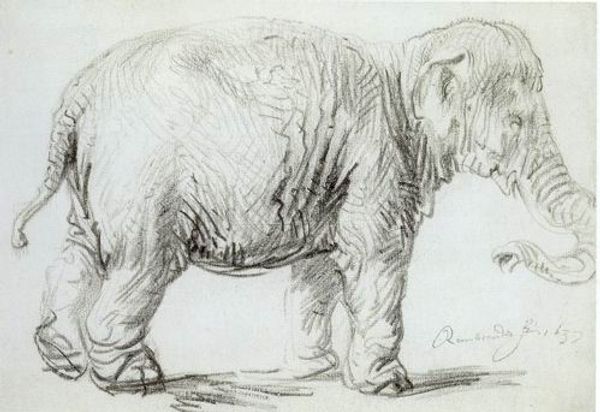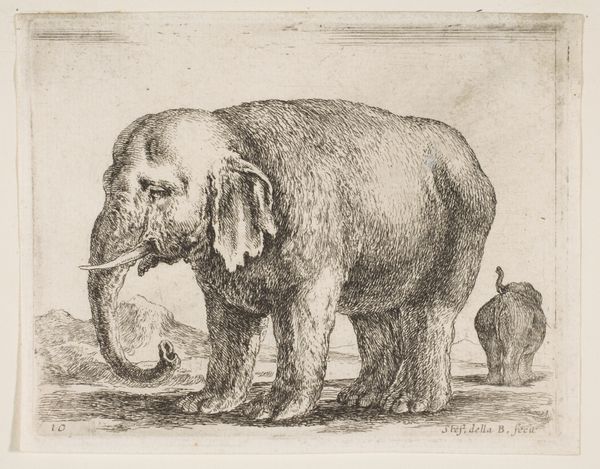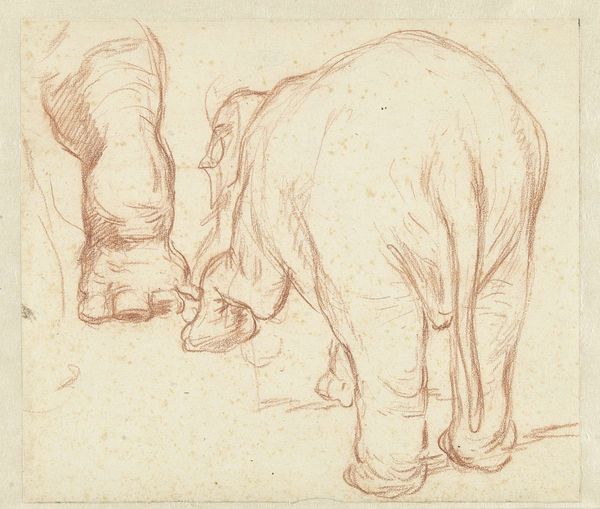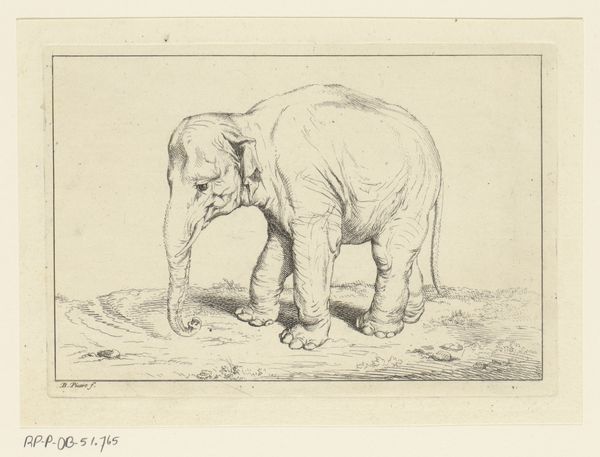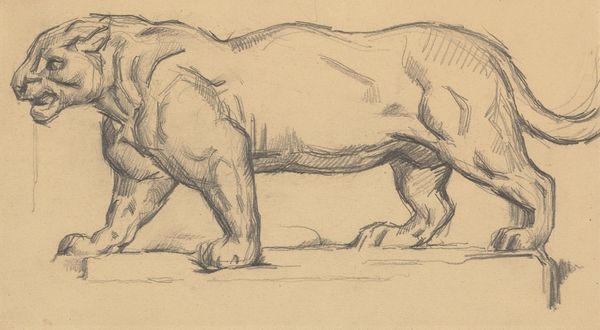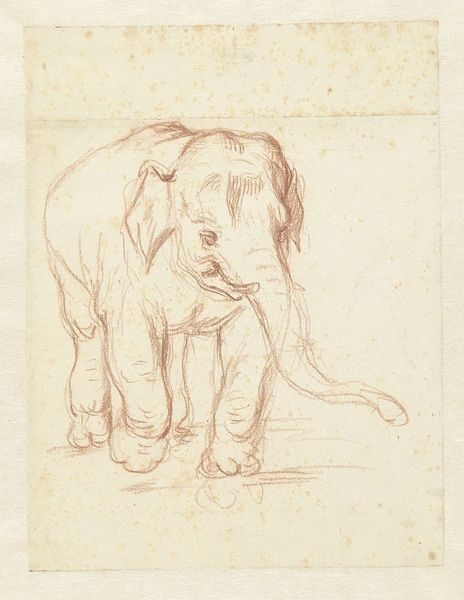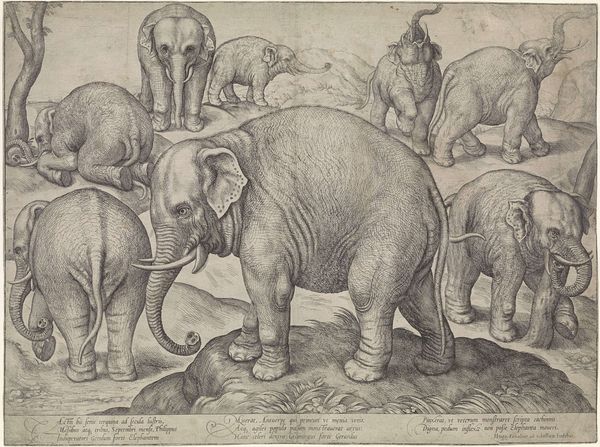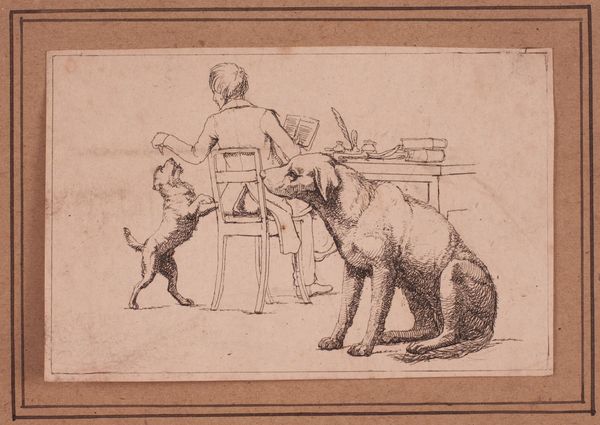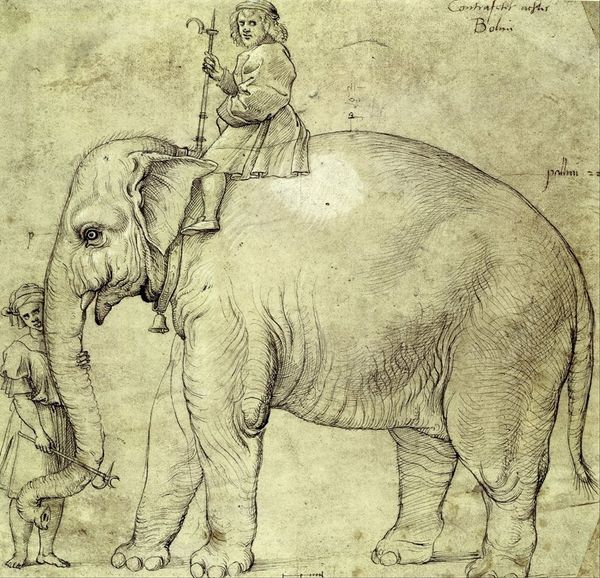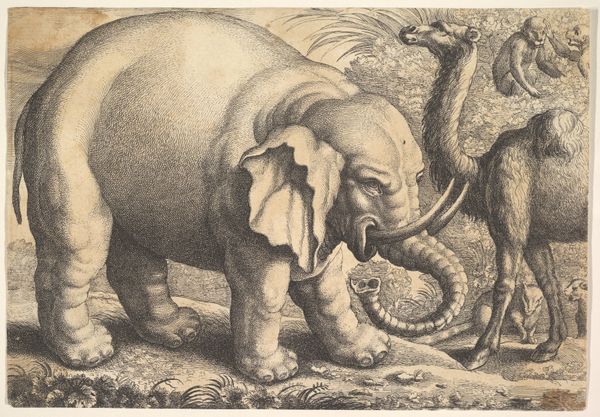
drawing, pencil
#
drawing
#
baroque
#
animal
#
dutch-golden-age
#
figuration
#
sketch
#
pencil
#
line
#
realism
Dimensions: 17.9 x 25.6 cm
Copyright: Public domain
Editor: So, this is Rembrandt van Rijn's "An Elephant," created in 1637. It’s a pencil drawing. I’m struck by the textural contrast between the rough hide of the elephant and the almost ethereal quality of the figures beside it. What stands out to you when you look at this drawing? Curator: The brilliance of this work resides in Rembrandt's deft manipulation of line. Notice how varied the lines are; some are bold and assertive, defining the elephant’s bulk, while others are delicate and fleeting, suggesting shadow and form. What effect do you think this variation achieves? Editor: It creates a real sense of volume, and that the elephant is heavy, but also emphasizes its wrinkles and folds? The lighter lines make the people look almost like ghosts. Curator: Precisely. Observe, too, how the composition guides our eye. The elephant is positioned prominently, nearly filling the frame. The figures are smaller and placed further back, which serves to accentuate the elephant's immense scale. How would the piece be altered, do you think, if the people were equally as detailed and in the foreground? Editor: The elephant wouldn’t seem as monumental, I suppose, or perhaps they'd have more interaction, if they weren’t faded away like that. Curator: Indeed. Consider how Rembrandt has utilized line to capture both the physical presence and perhaps even the implied power of the animal. It’s more than just a representation, isn't it? Editor: Yes, it really captures a sense of its mass and even its gentleness, despite its size. I learned a lot about Rembrandt's artistic strategies through the lens of form. Curator: And I have gained a renewed appreciation for the nuances within Rembrandt’s line work.
Comments
No comments
Be the first to comment and join the conversation on the ultimate creative platform.
